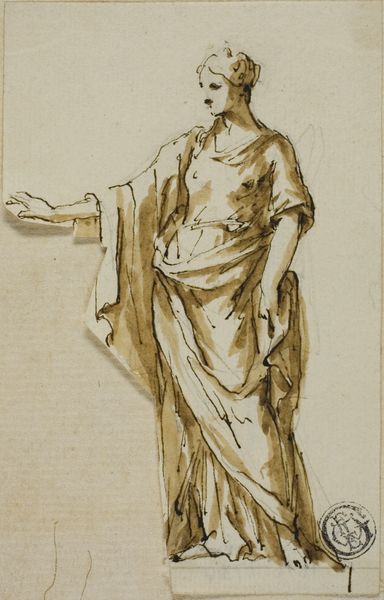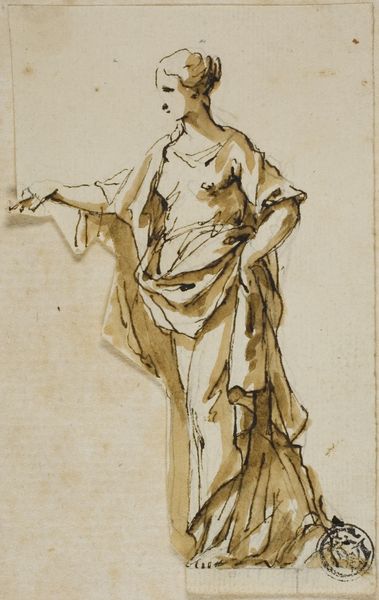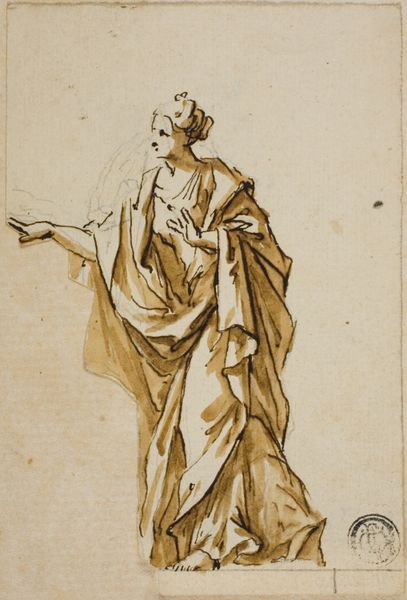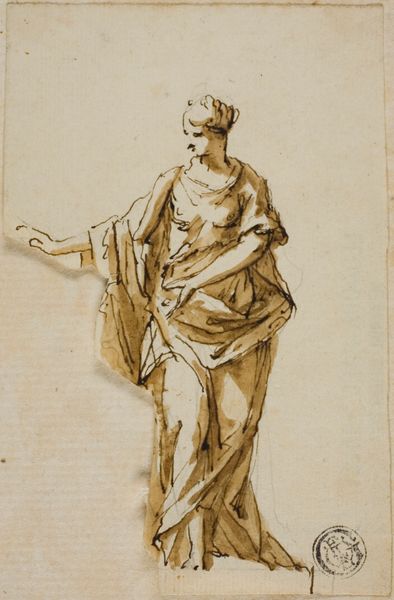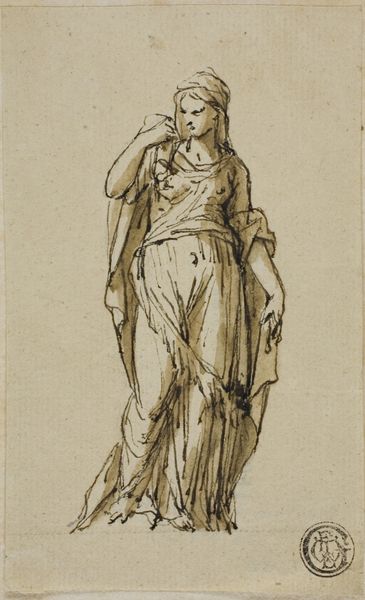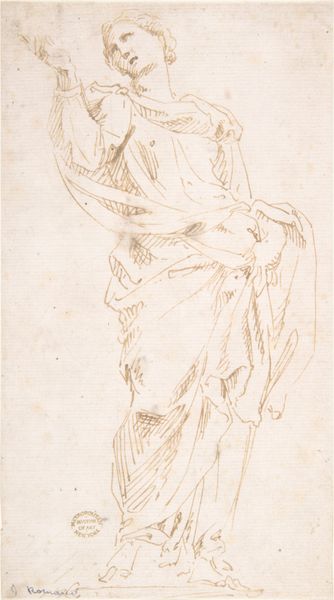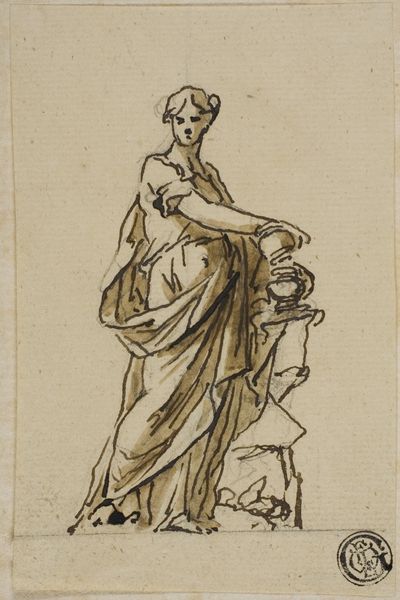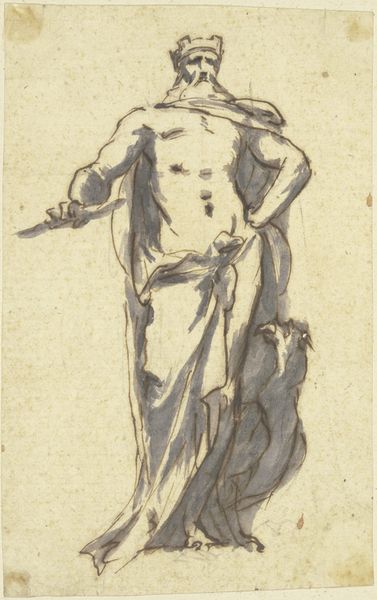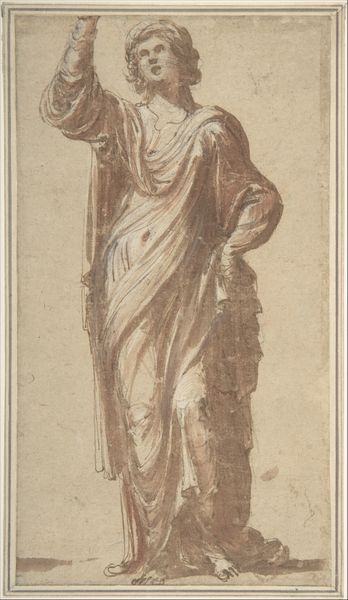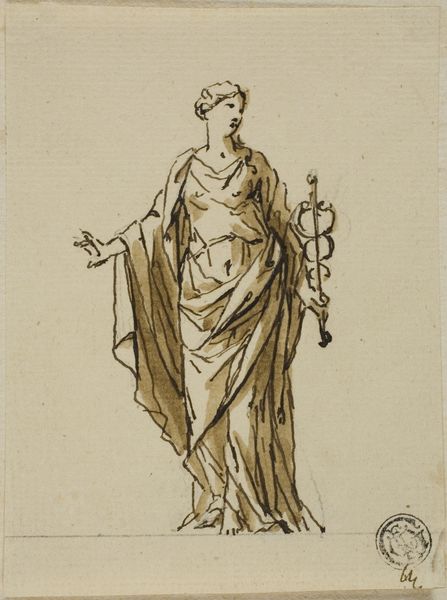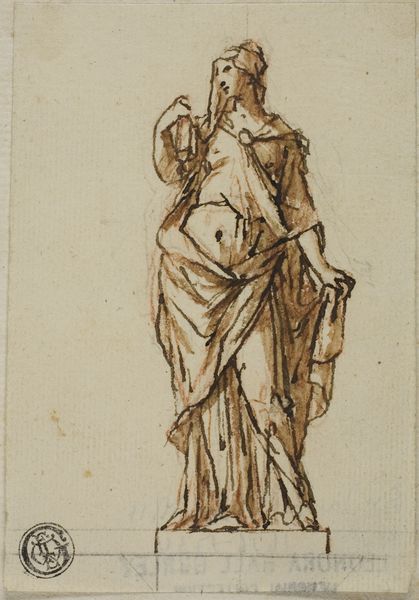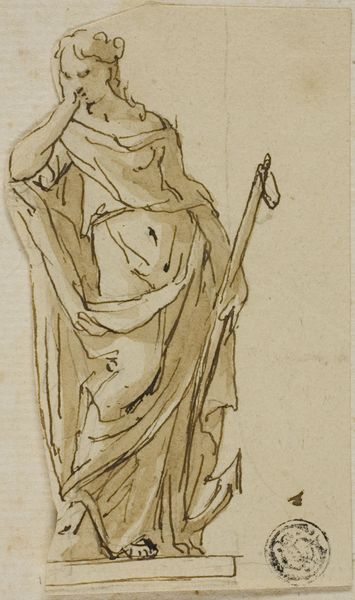
Standing Female Figure with Right Hand Raised n.d.
0:00
0:00
drawing, paper, ink, graphite, pen
#
drawing
#
classical-realism
#
figuration
#
paper
#
ink
#
graphite
#
pen
#
nude
Dimensions: 100 × 70 mm
Copyright: Public Domain
Art Historian: Alright, let’s dive in. Editor: So, this is "Standing Female Figure with Right Hand Raised" by John Michael Rysbrack, no date is specified, but the information suggests it’s an ink, graphite, and pen drawing on paper. It gives me the impression of a preliminary sketch. What do you see in this piece? Art Historian: Well, immediately, I'm drawn to the physical act of its making. It’s about understanding how Rysbrack worked, what materials were readily available to him, how they influenced his process. How did the limitations or possibilities of pen, ink, graphite, and paper shape the final form we see? Editor: That’s interesting! I hadn't really considered the materiality influencing the classical subject matter. Art Historian: Exactly. Think about the paper itself: its sourcing, production, distribution. Paper wasn't always cheap or easily accessible. The quality of the ink and graphite, too – where did they come from, who produced them? These materials tell a story of labour, trade, and resource extraction of the time. Editor: So you're seeing the social and economic systems embedded within the artwork’s very existence, not just a classical form. But how does focusing on the material production change how we perceive a figure drawing like this one? Art Historian: By recognizing it as an object embedded in specific social relations, we understand the act of artistic creation is not purely individual or divinely inspired, but materially grounded, mediated by labor and commerce. Instead of simply admiring the artist's skill in depicting an ideal form, consider what conditions enabled that depiction. Editor: That makes sense. It encourages us to look beyond the surface beauty. Art Historian: Precisely. So, how might understanding the labor behind these materials deepen your appreciation of the drawing? Editor: It highlights the artist's labor but also of every person that were involved. Thinking about how artists work within that framework provides a much wider insight. Art Historian: Indeed. I see classical idealism transformed into materialist realities. Editor: Okay, I hadn't considered the drawing this way before. I appreciate your insights. Art Historian: My pleasure.
Comments
No comments
Be the first to comment and join the conversation on the ultimate creative platform.
